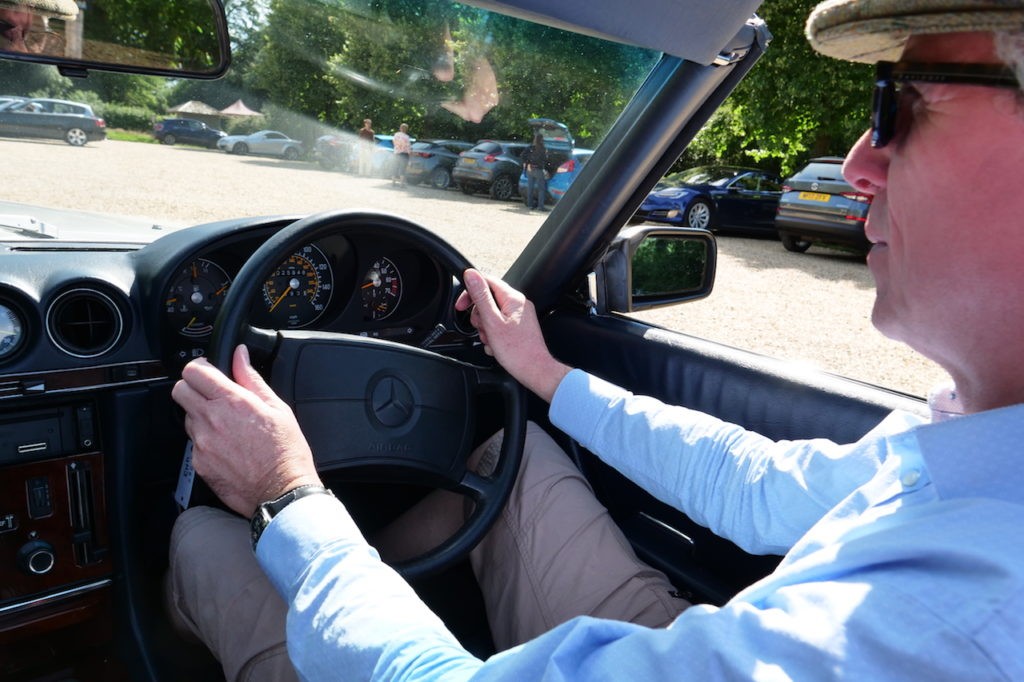The Mercedes-Benz W230, often referred to as the modern SL, embodies a significant evolution from its predecessors. To explore this lineage, we compare a 1988 R107 500SL with its modern descendant, a Brabus-tuned R230. This comparison highlights the distinct personalities and driving experiences of these two generations of Mercedes-Benz SLs.
A Tale of Two SLs: Design and Driving Experience
Stepping into the R107 500SL is like entering a time capsule. Its compact dimensions, snug cockpit, and large steering wheel contrast sharply with the modern R230’s expansive size and technology-laden interior. The R107 demands a more involved driving experience, engaging the driver with its direct steering and responsive chassis. While the V8 engine provides ample power, the focus is on a connected driving experience rather than outright speed. The car communicates with the driver through the road, providing feedback and requiring active participation. Braking performance is surprisingly modern and confidence-inspiring.
In contrast, the Mercedes-Benz W230, especially in its Brabus guise, prioritizes power and luxury. Its larger size provides more comfortable accommodations, but sacrifices some of the nimble feel of the R107. With over 550 bhp on tap, the R230 delivers exhilarating performance, but the driving experience is more insulated. Technology mediates the interaction between car and driver, offering a refined and effortless ride. The modern amenities and sheer power of the R230 provide a different kind of thrill, one focused on speed and comfort.
Size Matters: Maneuverability and Presence
The R107’s smaller footprint makes it surprisingly more manageable in tight spaces and on winding roads. Its nimble handling characteristics shine through, making it a joy to pilot. The R230, while undeniably powerful, can feel somewhat cumbersome in comparison. Its larger size demands more attention and careful maneuvering, especially in urban environments or parking lots.
Top-Down Thrills: Two Approaches to Open-Air Motoring
Even the act of lowering the convertible top highlights the generational differences. The R107 requires a manual process involving levers, releases, and a separate piece to secure the top to the windscreen. It’s a charmingly involved procedure that adds to the classic car experience. The R230, on the other hand, features a fully automated top that effortlessly folds away at the touch of a button.
Distinct Personalities: Classic Charm vs. Modern Muscle
Ultimately, the R107 and the Mercedes-Benz W230 offer vastly different driving experiences. The R107 embodies a classic, engaging driving experience, emphasizing feel and feedback. The W230 delivers modern performance and luxury, focusing on speed and comfort. While their DNA might be shared, their personalities are distinctly individual, appealing to different tastes and driving styles. Both cars garner admiration, but for different reasons. The R107 exudes classic elegance and a sense of occasion, while the W230 boasts modern styling and aggressive performance. Choosing between them is a matter of personal preference, akin to choosing between two distinct eras of automotive design and engineering. The Mercedes-Benz W230 builds upon the legacy of the SL, but forges its own path in terms of performance and luxury.

